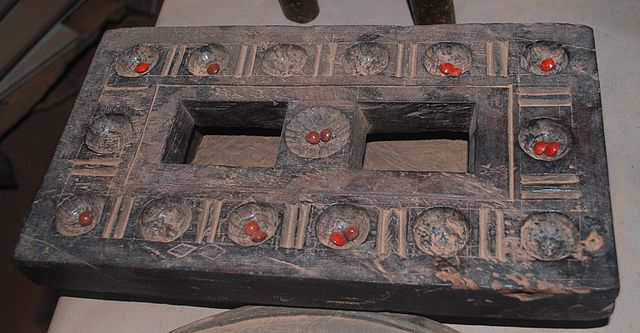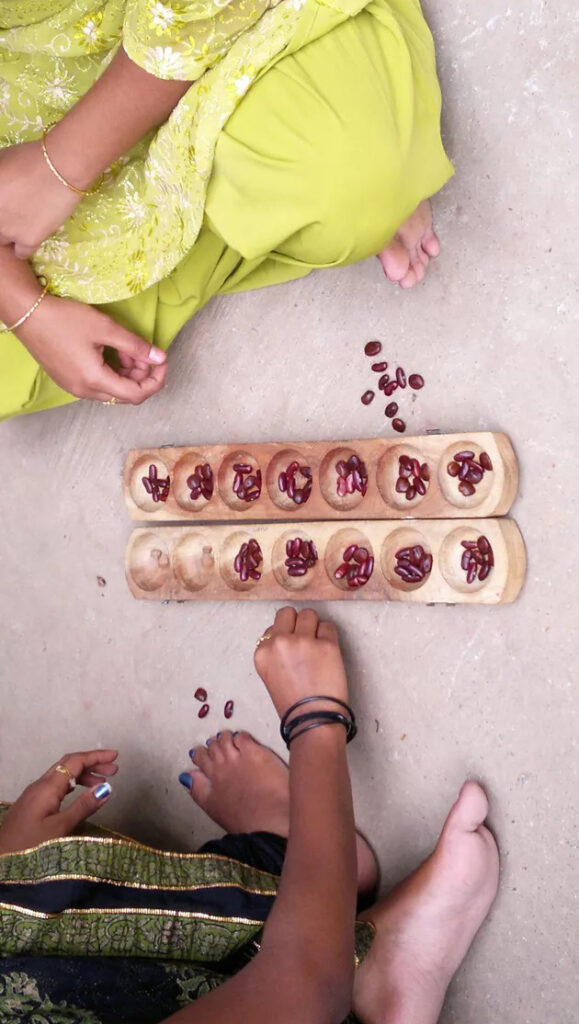Pallanguzhi
Pallanguzhi, a historic board game, has deep roots in ancient India, particularly in Tamil Nadu and northern Sri Lanka. With its origin tracing back to the Chola dynasty, Pallanguzhi became a significant part of the cultural and recreational fabric of Southern India. The game’s name, meaning ‘many pits/holes,’ perfectly describes its design, featuring a rectangular wooden board with two rows and seven columns, totaling 14 pits. Traditionally played with 146 counters, such as cowry shells, small pebbles, stones, or tamarind seeds, Pallanguzhi serves as a two-player game with a mathematical foundation.

Image Source : Getty Images
According to legends, Sita, while awaiting rescue from Lanka, is said to have engaged in Pallanguzhi, adding a mythical and cultural significance to the game. The gameplay involves the equal distribution of seeds and a strategic competition to accumulate the maximum number of seeds in designated pits.
Pallanguzhi finds a special place in cultural celebrations, particularly during festivals like Shivratri and Vaikuntha Ekadasi, where women participate in jagran, staying awake throughout the night. The game’s name, ‘pathinalam kuzhi,’ reflecting ‘fourteen pits,’ signifies the layout of the game board.

Image Source : Wikipedia
Seeds, pebbles, or cowrie shells serve as playing pieces, and two players take turns distributing these pieces, capturing the opponent’s shells based on variant rules. The ultimate objective is to amass the most shells, leading to the declaration of a winner.

Image Source : boardgamegeek.com
More than just a pastime, Pallanguzhi holds educational value, aiding in the development of hand-eye coordination, concentration, and quick mental calculations. It also fosters learning in counting and reasoning, making it a valuable educational tool, especially for children. With its cultural significance, deep-rooted history, and educational benefits, Pallankuzhi continues to be a cherished traditional game, connecting generations and preserving India’s rich cultural heritage.
